Garden Report: March 16
I think I can say that despite all the suffering last fall with planting one meellion bulbs, it has turned out to be worth it.
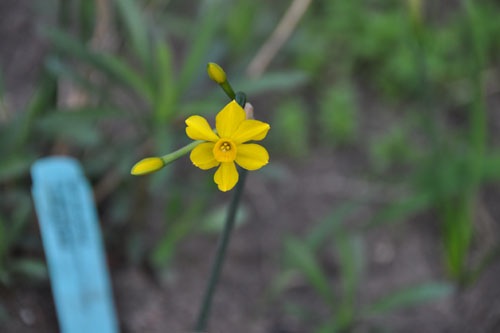
These are Narcissus jonquilla simplex. They're ridiculously cute. They shot up what looked like weedy little leaves a couple weeks ago and this week they opened out to be these adorable tiny flowers. The flower is as big around as a nickel.
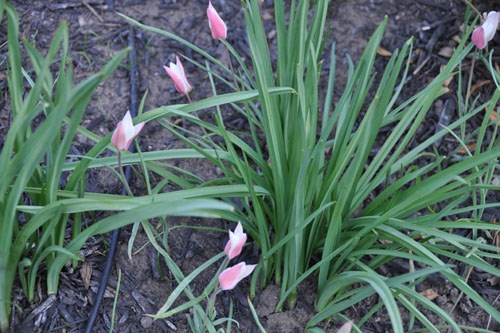
Also new this week are the Lady Jane tulips (Tulipa clusiana "Lady Jane"). I am more and more convinced that the ones I planted a couple years ago that are yellower rather than white are actually Tulipa clusiana "Cynthia," though I'm not going to bother digging them up and replacing them with the right thing. They look fine. I just like these better.
Interestingly, the new Lady Janes are a week or so behind the older ones.
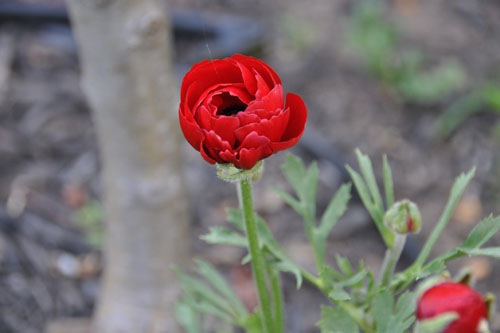
Whereas this ranunculus, one of the new ones I planted in the fall, is weeks ahead of the older ones (which I guess I should divide this year). I must say, this red is intense and amazing in person as well in this photo. I've just had the nice pink ones under the Asian pears, so this could really be pretty when they've gotten bigger and they all get into bloom at once.
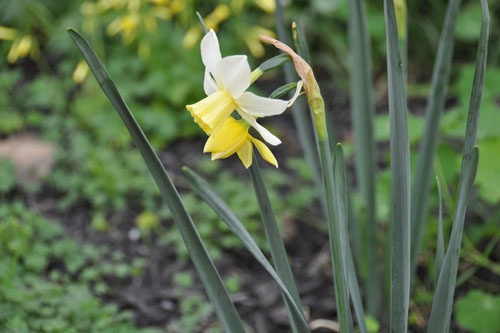
The next daffodils opened up this week, too. This is Narcissus "Pueblo", and the yellow is subtle and surprising. You kind of expect the flower to be white from a distance, then you get closer and it's obviously yellow.
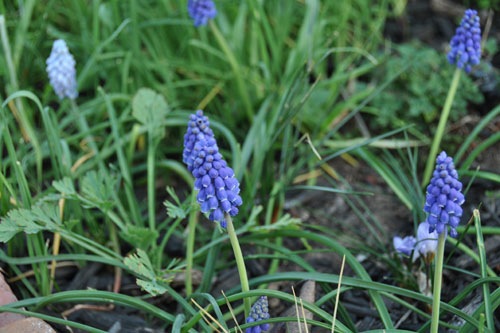
This week the grape hyacinths popped open, as well. They look even better than I expected. I've had mixed results with grape hyacinths in the garden: they seem to come up for a while then stop. But that could also be the chaos of living in my garden over the last several years, so we'll see how this batch goes. This is John Scheepers's "Magical Muscari Mixture," which is a nice range of shades from light to dark.
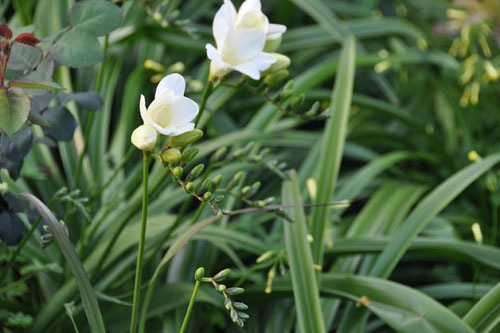
The freesias started opening this week, too. A couple of my neighbors have most of theirs open already, but another couple neighbors' are in the same state as mine, so it's nothing personal.
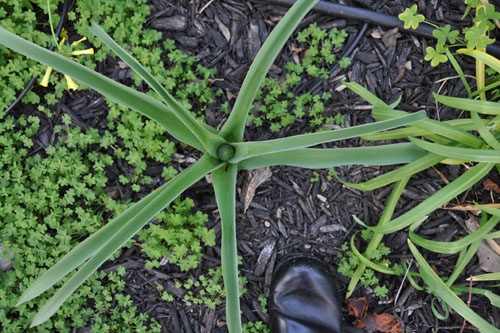
Coming up soon: the great big allium blooms. These are Allium schubertii, which I also have in the back. I don't recall those ones being nearly as large as this even in their first year (see my toe there for scale). This could be very dramatic.
And this week the fruit trees all started exploding with blooms. I decided not to bore you with endless pictures of pink flowers, but basically everybody has some flowers except the quince and the crabapple. The local bees are very happy with matters.
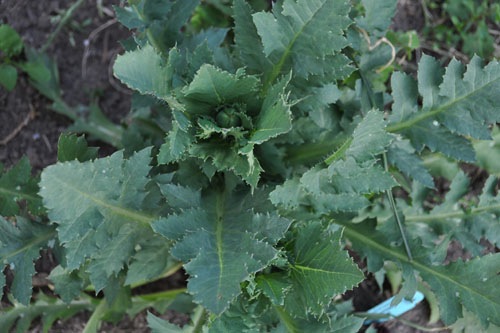
The other thing that I only really noticed this week is that a bunch of self-sowing plants managed to self-sow successfully. I'm going to lay this success on the delicate hands and attentiveness of the gardeners.
Above I show you a poppy that is about as improbable as a poppy can get. Several years ago a client gave me a bag of poppy seedheads. At the time they were over 10 years old, and I just stuffed them into the shed for another five or so years. This winter I was cleaning out the shed and found the bag, and just sprinkled them all over the bed by the deck. And here we have it: one of eight poppy plants to appear in that bed.
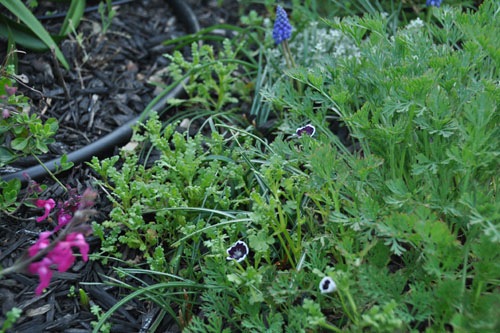
This is one I'd just given up on. The Nemophila menziesii 'Penny Black' I planted last year seeded, and lots of little babies are coming up. I've planted these guys every year or so for more than five years, and this is the first time a seedling has appeared. Even though they are natives, and even though this climate and soil is about their ideal conditions. I'd pretty much given up on getting them to come back.
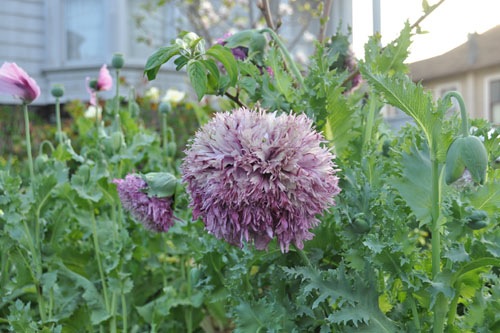
The time change has really kicked my butt this year, for a variety of reasons, but it also means I get to walk around the garden in the evening before the sun sets, and enjoy my poppies. And they have been very enjoyable, especially these ridiculous specimens. What are they? I'm not sure; I thought these were "Sugar Plum," but they're too floofy for that. I don't see another candidate at Annie's web site, so until I manage to find the tag under the massive plant, they will remain a mystery.
Those are Lavender Breadseed in the background, though. I love those ones.
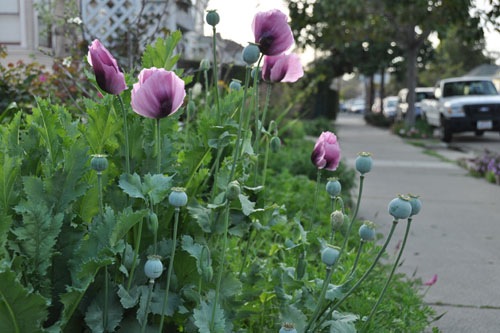
See? Lovely. This is as the sun was going down, when they close up their petals for the night. Sometimes if you open them up you will find a small bug or bee stuck in there, snuggled down in the center of the flower and looking resigned to spending the night. Our native bees actually choose to sleep that way.
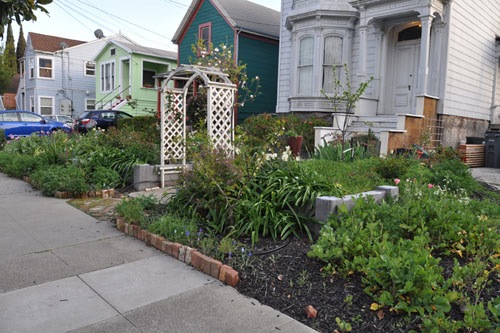
Here's a sort of view from the other direction. The poppies are down at the very far end of the walk. It's looking very green there; the California poppies are out in force now. Actually, they seem to be out in force quite a lot of the year; I'm starting to wonder if I should be controlling them more.
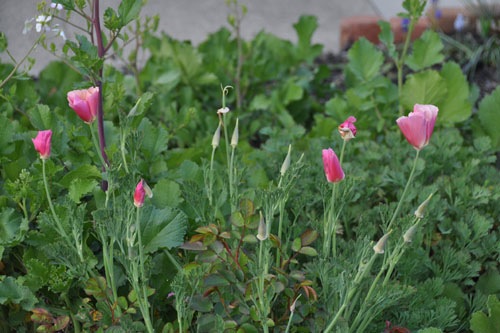
I'm already pretty controlling about colour. I planted shades of pink California poppies years ago, and in order to keep them mostly pink, I go through and pull out any poppy showing signs of the more typical orange. It is somewhat controlling behaviour but if I didn't do it the orange ones would take over the place in short order.
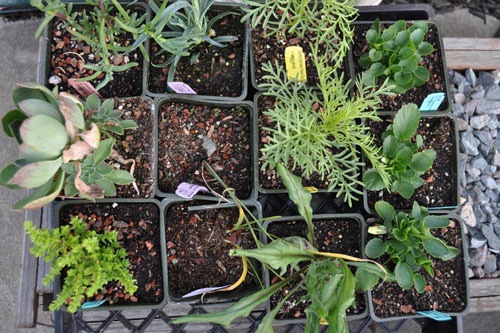
Today I took a little trip up to Annie's in Richmond and picked up some new plants.
From the top left, down the first column are:
Lampranthus "Pink Kaboom" -- Californians will know this as a miniature ice plant
Aeonium escobarii For the swath, for a little drama. You know how sometimes you do something thinking it might be a bad idea but you are going to do it anyway? That's me, buying a plant that grows gigantic for a fairly tight space.
Crassula lycopodioides, which is mostly a foliage plant, to put in the swath to fill in some blank spots.
In the second column:
Dianthus caryophyllus "Chomley Farran", to put in one of the front walk pots. I have one of these already and love it, but it is in a stupid spot and I've been afraid to move it for fear of killing it. Once I get this one set up in the pot I can dig the other up with impunity.
The next two are Ferraria crispa "Spider Iris" and Ferraria ferrariola, a pair of bulbs to be grown in pots. I love weird bulbs and these are really weird, and they smell nice, too (though apparently not to everybody).
In the third column:
A couple of Cosmos pinnatus "Happy Ring" for some blankish spots in the back.
And a Centaurea 'Black Gem', for the same purpose. Centaureas are supposed to self-sow, and I always leave them around to drop their seeds as they will, and they have never come back for me. Let's see if this one works better at that.
The last row is three pots of Viola "Etain," which I have grown before. Another perennial that seems to die off easily, but I'll give it another shot, not under the roses this time (just about nothing works right under the roses, anyway).
Tomorrow I need to plant these and the handful of plants I overwintered in pots out of laziness. And probably also paint all the new bee woodenware I bought this winter, as well.posted by ayse on 03/16/13